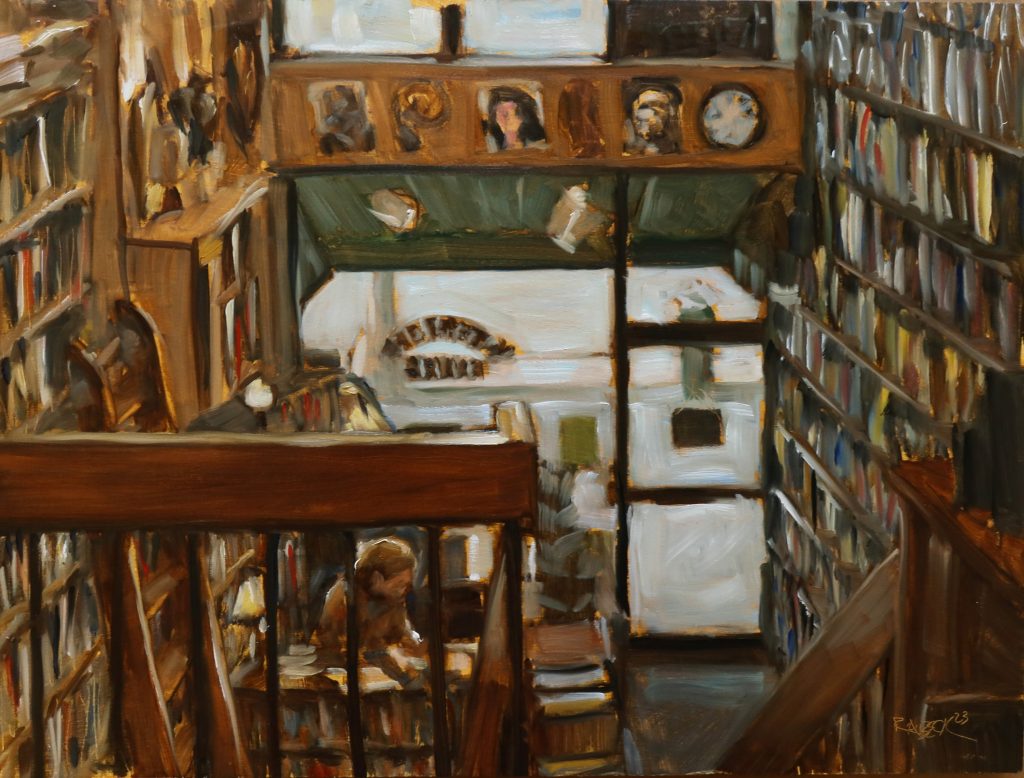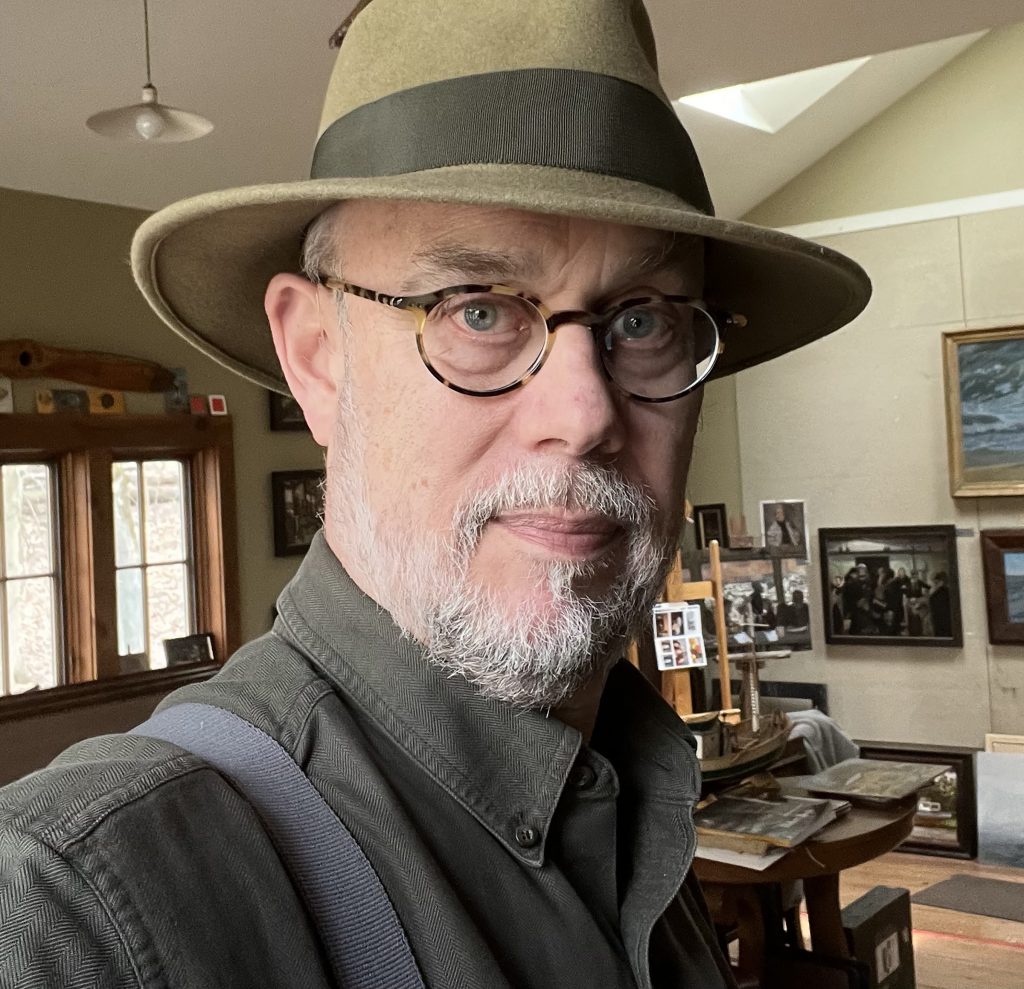Artist Robert Beck has been painting for more than 30 years. He appears never to be at a loss for inspiration. Often, he paints within steps of either of the two studios he maintains, one in Bucks County, PA, and the other on the Upper West Side at 212 West 79th Street. He has also painted from life farther afield, in Africa, Europe, and across the US.
When in the city, he and his wife stay in their apartment on Central Park West in the 60s. For many years, he worked in a small studio in the building on West 80th Street where architectural historian Christopher Gray ran the Office for Metropolitan History. A couple of years ago, when lease renewal became a problem, Beck found his current, spacious studio. In the time since then, he has painted quite a few buildings and businesses on 79th Street as various as Knitty City, The Lucerne Hotel, and the Dublin House Bar. Beck has also painted many more oils with subjects located on the blocks beyond. Just counting those on Broadway, his paintings of storefronts include Fairway, Gray’s Papaya, and the special green space offered by Verdi Square. Accompanying the latter two, on 72nd Street, he’s painted the subway station and Fischer Bros. & Leslie Kosher Market. Beck writes regular blog pieces for the West Side Rag, developing articles that relate to specific paintings he’s done of Upper West Side subjects. A New York Post story on Yoko Ono’s departure from the Dakota was linked to Beck’s painting of the Dakota and his article about her neighbors’ feelings about her move.

Beck’s painting of Broadway subjects includes his 2023 painting of Westsider Rare & Used Books Inc. at 2246 Broadway. This beautiful 12” x 16” oil painting is both representational and impressionistic. It invites a conversation with Beck that sheds light on his approach to his work and clarifies how it meshes with his overall curiosity about people, places and finding pleasure in daily life.
The backstory of the Westsider Books painting began when Beck visited Westsider Records on 72nd Street and then opted to paint Westsider Rare and Used books, also owned by Dorian Thornely. Along with Beck’s passion for used books, the chance to paint the story from the intimate vantage point of the railing on the second story, looking to the store below, was irresistible. Beck’s routine for setting up follows a practice perfected over the completion of thousands of paintings. He starts by unfolding the French easel, which contains a gesso-prepared board and a rectangular palette. He always organizes a variety of blotches of paint by color and builds the image according to the stipulations of classical rules learned during his training at the University of Pennsylvania Academy of Fine Arts.
Then he begins assessing how the movement of light coming in through the window or outdoor light will affect his rendering of the space. He asks himself, “Do I want it to look like it looks now or how the space will look at the end of the three-and-a half hours it takes me to finish the painting.” One essential is having a view that is likely to remain unobstructed for several hours. In the Westsider Books painting the store seems empty of shoppers and human scale is provided by the staff person who appears to be busy at the front desk. Beck says likes depicting people in his work. It gives the paintings “a heartbeat.” Sometimes, working in stores has been challenging as when Beck was set up painting with his back to the front window, facing the cash registers at Fairway. A sudden surge of customers at what had been expected to be a quiet time, presented an unexpected challenge.
Browsers usually are polite about interrupting Beck at work at his easel, but he genuinely likes talking with observers and takes a moment to chat with children who may show an interest in what he’s doing, and sometimes he asks them to put a dab of color where they think it should go. “It’s not only memorable,” he said. “It affects their view of art. It’s a powerful learning tool.” Having people come to view his work and talk with them about it is an opportunity he very much enjoys.
If Beck were asked what artist of the past from the neighborhood he might like to engage in conversation with, he might consider John Koch, who lived in the El Dorado. An important artist in 20th-century realism, Koch was known for paintings with light-filled interiors and depictions of contemporary life on the Upper West Side. Like Beck, Koch maintained classical traditions while the New York art world was focused on trendier genres. Koch died in 1978.
Robert Beck’s style and focus lean more toward the Ashcan School of painters, with George Bellows being a favorite. “That’s somebody I would love to paint next to,” Beck says. “Not only do we share the same eye and sensibility, but I’d learn a lot.”
Appointments for Beck studio visits can be requested on Robert Beck‘s website, robertbeck.net

 By
By